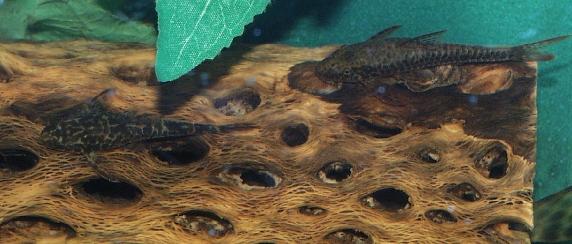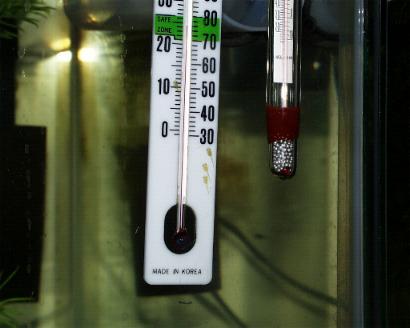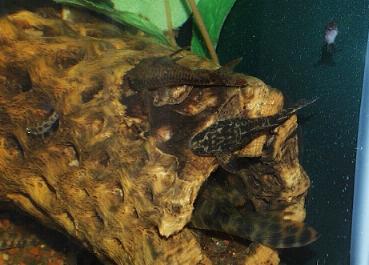SCOTCAT.COM
your internet guide to all things catfish
| The Redfin Dwarf Otto |
by Kevin Korotev |
Parotocinclus maculicauda
P. maculicauda is another of the “algae eaters” that eat algae only when they have to. My 5 were given a varied diet of live baby brine, frozen bloodworms and simple flake. Grazers by design, I made sure they weren’t dashing for food at first sight; a sure sign of underfeeding. Suckermouths or “Lories” as the new nickname indicates, get that kind of treatment as a matter of course as bottom dwelling Loricarid. Water values are secondary to water quality. It is not recommended to keep these fish at high temperatures, but if spawning is a sign of good health; these fish spawned in temperatures as high as 80 degrees. Once they began to spawn (at an age I’d guess to be a year or more) they did so regularly through minor pH and hardness swings. Neutral to slightly acid and soft seemed best. Spawns of from 11 to 18 eggs were found every 10 to 14 days in the exact same place: On the tank’s thermometer.
Rarely have I had more than 3 fry from any one spawn survive a month. My best luck seems to come in rearing tanks loaded with algae. The fry also seem to do a little better if they can graze on a sponge filter coated with uneaten food. Still, the fry grow excruciatingly slow. Those that I submitted for BAP were well under an inch at between 45 and 60 days. It took two spawns to get the 5 required fish. I do not know if this is a typical example of fry mortality or some true bungling on my part...again’ there is little reference material. The Parotocinclus maculicauda in my tank seem to have two distinctly different color patterns. One is like the photo in the Atlas. The other is...not so. I have sent pictures of both to “experts” and no one claims to know if this is sexual dimorphism, possible regional color differences or a simple living example of why TW claims, “Color means nothing”.
If the atlases we use for reference aren’t always right and the experts don’t always know, then this article may be the most unscientific detail you’ll ever see written about Parotocinclus maculicauda; the Redfin Dwarf Otto. Photo
Credits: Kevin
Korotev |
If you would like to contribute an article, please e-mail me. You will of course be credited for your work.
If you would like to donate any denomination of money to the site just click the above link button. All proceeds will go to running the site and hopefully to keep it going for a few years yet.
Print or e-mail this factsheet below




